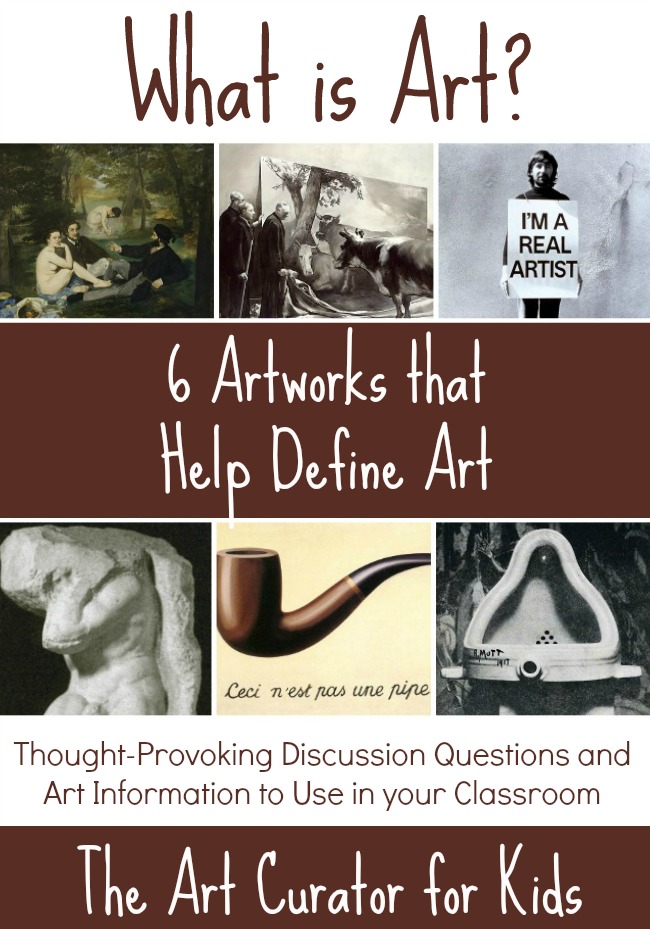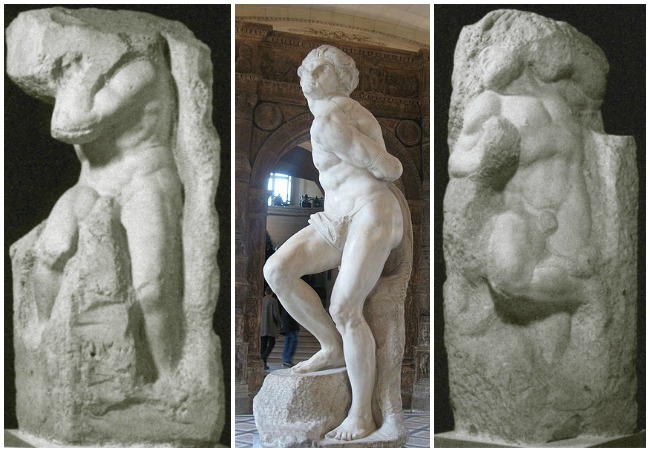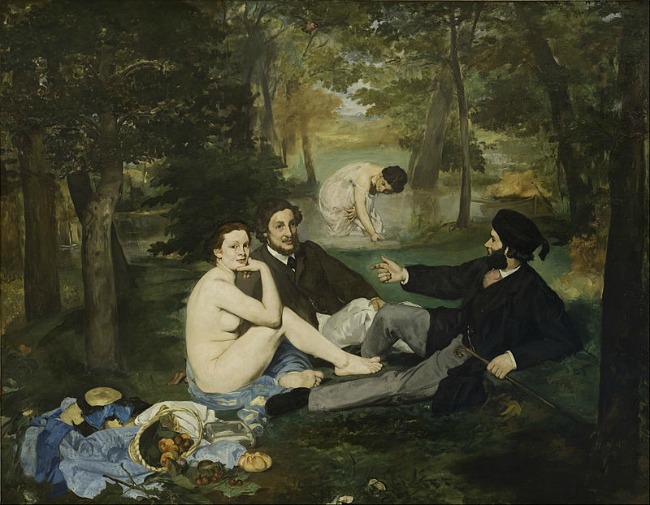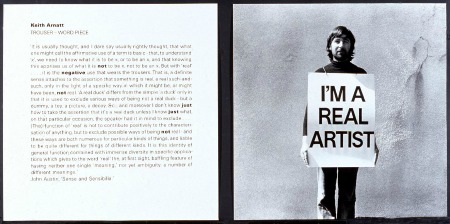A few months ago, I shared with you 6 artworks about other artworks. I love this art about art theme, so I want to keep going with it today. The art about art artworks in this collection are works that help define what art is. They make you think about that ultimate art and aesthetics question, “What is art?“
In my community college classes early in the semester, I have all of these artworks in an “art about art” lesson. I’ll share some of the discussion points and why I put them in this art about art category below. You will see the last question of each question list below is, “What does this artwork tell us about art?” That’s how I tie them all together. I have also divided the class into groups assigning each group one artwork to analyze and then present their ideas to the class.
Grade Level: These artworks and discussion questions are best geared toward high school or college students.
Note: Several of these artworks have nudity. My policy is to not censor on the blog because that is my personal approach, and I leave it up to you as the teacher or parents to decide if you are comfortable with that.
Michelangelo Buonarotti, Slaves, 1513-1516
I don’t know if Michelangelo was considering this when he made these artworks, but to me, these sculptures address this art about art theme in two different ways. First, I love how these sculptures show the relationship of the artist to the art. You can see the artist’s hand, and it really shows you how incredibly hard it is to make these sculptures. The contrast of the rough and smooth textures really highlights this.
But, the main reason I chose these artworks is how they show the figures attempting to break free from the stone. Michelangelo famously said, “I saw the angel in the marble and carved until I set him free.” And he also said, “The best artist has that thought alone Which is contained within the marble shell; The sculptor’s hand can only break the spell To free the figures slumbering in the stone.” Michelangelo believed the figure was there, and it was his job to release it.
Edouard Manet, Le Dejeuner sur L’Herbe (Luncheon on the Grass), 1863
Nudity is a very common subject in art, but when this painting was first displayed at the Salon des Refusés it was really shocking and controversial? Why? Because, it was normal to have nudes in a mythological or allegorical context, but it was not normal to have a nude woman in a contemporary setting–especially one surrounded by clothed men.
Another dimension to this is the stare by the woman to the viewer. Her looking out at us makes us feel a little voyeuristic in a way. I think it can spark an interesting discussion about the connection between the artwork and the viewer.
René Magritte, The Treachery of Images (This is Not a Pipe), 1929
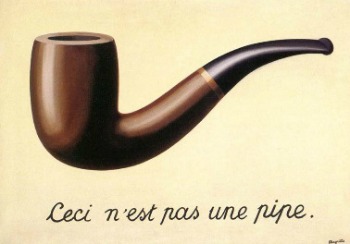
The text on this image says, “This is not a pipe.” At first, this is confusing to my students usually. “Yes, it is.” they think. But, when you keep thinking about it, you realize no, it isn’t a pipe. It is a canvas with oil paint on it (or a bunch of pixels of color projected onto the screen on this website). It is not a pipe; it is a picture of a pipe. Ultimately, pictures and words are just symbols for the real thing.
I usually bring in a little bit of Plato’s philosophy into this discussion. Plato believed that art is an imitation of an imitation. He believed that all things were originally an idea from God. So a pipe is not a pipe. A pipe is an idea made by God. An actual real-life 3D pipe is an imitation of God’s idea of a pipe. So, a painting of a pipe is an imitation of the pipe-maker’s imitation of God’s idea of a pipe. Confused, yet?
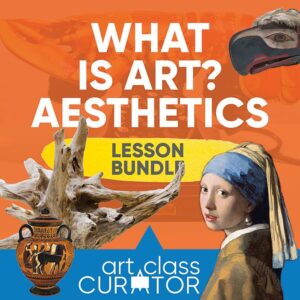
Aesthetics Lesson Bundle
What is art? Get your students in the mindset to THINK in art class and lead fun art discussions with this lesson bundle!
Keith Arnatt, Trouser – Word Piece, 1972-89
Conceptual art from the 1960s and 70s is some of the most intriguing art to me. Artists during this time just did anything and everything to push the boundaries of what is and is not considered art. This piece by Keith Arnatt has a photo of the artist holding a sign saying “I’m a real artist” plus a text quotation from a book that questions how something changes when you add the word “real” in front of it. Read more about the work here.
Marcel Duchamp, Fountain, 1917
Marcel Duchamp took a urinal, placed it on its side, signed a fake artist’s name on it, and put it in an art exhibit. This begs the question, does the artist have to actually make the object in order for it to be art?
Mark Tansey, The Innocent Eye Test, 1981
I think this artwork is delightful. I see these scientific men trying to determine the merits of a painting’s “realness” by seeing if it would fool a cow. It’s funny. Here’s a quotation from the artist to help you think about this one even more.
I think of the painted picture as an embodiment of the very problem that we face with the notion “reality.” The problem or question is, which reality? In a painted picture, is it the depicted reality, or the reality of the picture plane, or the multidimensional reality the artist and viewer exist in? That all three are involved points to the fact that pictures are inherently problematic.
— Mark Tansey, quoted in Mark Tansey: Visions and Revisions, by Arthur C. Danto (Source)
Learn more about teaching Art and Aesthetics!
This post is small a part of my Art and Aesthetics Lesson Bundle. Get this lesson and more as a member of the Art Class Curator Curated Connections Library.

Get the Full Lesson!
This Lesson is in The Curated Connections Library!
Find the full lesson from this post along with hundreds of other art teaching resources and trainings in the Curated Connections Library. Click here for more information about how to join or enter your email below for a free SPARKworks lesson from the membership!
Thanks for visiting! Which of these do you find the most interesting? What artworks did I miss? Share your thoughts in the comments!


